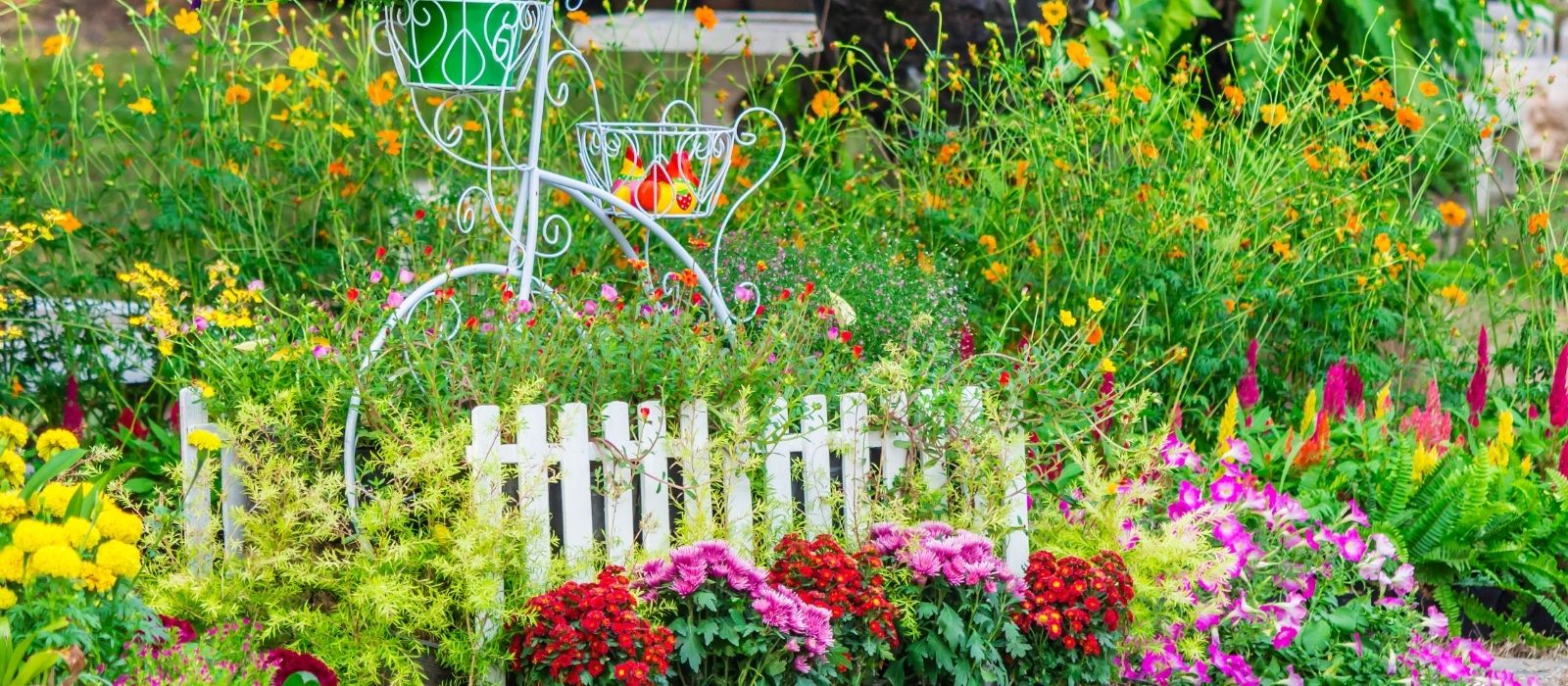
Creating you Cottage Garden
My top tip for creating a cottage garden is to choose a focal point. Traditional English gardens often feature gazebos, water features, trellises, or archways, but I love the idea of a randomly placed brightly painted door or a window box, inviting the viewer to imagine what lies beyond. Start small to avoid being overwhelmed. A smaller garden will allow you to grow your space as your confidence grows, adding paths and pockets of colour along the way.
It’s also essential to choose plants suited to your environment. Consider whether your garden is in full sun, shade, or experiences frosty conditions. By selecting the right plants for your space, you’ll make life much easier.
Colour and Planting Style
For a harmonious and balanced garden, choose plants with varying foliage shapes and textures, but repeat colours throughout the space. My favourite combinations are pink, purple, and white, or yellow and lilac. What colours would you like in your garden? The possibilities are endless.
When selecting plants, keep it traditional. Cottage gardens are known for their “old-fashioned” favourites, which perform reliably and are hardy, making them perfect for this style of garden. There’s no right or wrong way to create a cottage garden—if you decide to try something new, start small and expand if it works.
Planting Layout
Consider the shape of your garden. Generally, a repeating pyramid shape works best. Place taller plants like grasses and evergreens at the back, medium-growers in the middle, and low-growing ground covers at the front, which spill over onto paths. Repeat colours within each section to create a cohesive look. The goal is a natural, informal appearance, so don’t worry about making everything perfectly sloped.
Plant Choices for Your Cottage Garden
- Annuals: Use annuals for impactful planting. Many will self-seed, providing colour year after year. Ideal options include Calendula, Viola, Lobelia, Alyssum, Sunflower, Dianthus, and Sweet Pea. If starting from seed, rake the soil, create small indentations with the back of the rake, and sprinkle in the seeds. Water well and repeat this process in different planting areas. Alternatively, plant groups of five already growing annuals for a striking effect.
- Perennials: These are essential for colour, height, and texture. Perennials vary in height, so strategically place taller varieties like hollyhocks, delphiniums, and foxgloves throughout the garden. Plant perennials in clumps of 2-3 identical plants. Some great options are Foxglove, Penstemon, Lavender, Daylily, Echinacea, and Iris.
- Shrubs: Shrubs are the backbone of your cottage garden. Plant one shrub per zone for structure. Consider Hydrangeas, Roses, Conifers, and Azaleas for their variety and resilience.
- Climbers: Incorporating climbers over a trellis, archway, or gazebo creates a beautiful backdrop. Wisteria, Climbing Hydrangea, Jasmine, and Honeysuckle are all great choices.
- Bulbs and Corms: Bulbs like Daffodils, Bluebells, Tulips, and Peonies are classic cottage garden plants that add a pop of colour in spring.
There’s no limit to what you can create in a cottage garden. Start small, choose plants that suit your space, and play with colour and texture to craft a beautiful, low-maintenance garden that will bring joy year after year.


